True Tales of Tribeca Buildings
The History of Tribeca Buildings database—compiled from Tom Miller’s posts at Daytonian in Manhattan—has six more entries on the properties below. (Click the address to read the full text.) If you enjoy these, and you will, then you should definitely check out his website, which also has write-ups about buildings all over the island. And don’t miss his book, Seeking New York: The Stories Behind the Historic Architecture of Manhattan—One Building at a Time.
·························
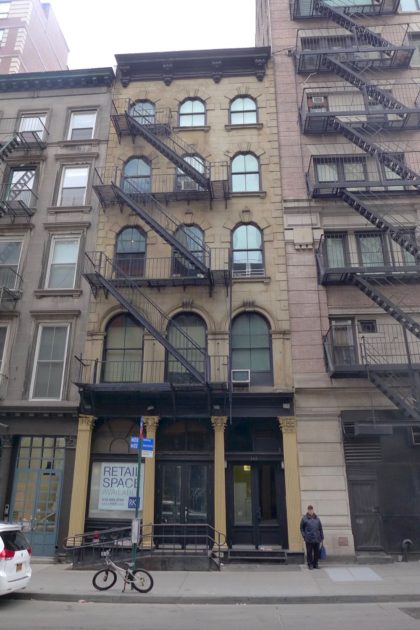 143 CHAMBERS
143 CHAMBERS
Among Henry Lyon’s employees was 19-year-old James Carr, who was married and lived on Chrystie Street. Businesses in No. 143 used a “hatchway” to hoist goods up from the basement—a shaft equipped with pulleys and ropes (think of an elevator shaft without an elevator). On May 2, 1874, Carr was helping in just such a project when his teenage bravado caused disaster. A few days later his coworkers would testify, “He had been warned not to attempt to slide down the fall-rope, but disregarding it had attempted to do so.” He lost his grip and fell from the second floor to the basement. The New York Herald said he was “seriously injured” and taken to the Park Hospital. Carr died the following day. An inquest was held and the jury rendered a verdict of accidental death. Business went on and a few weeks later an advertisement appeared in The New York Herald: “Wanted—An errand boy from 13 to 18 years old.” The macabre circumstances surrounding the opening may have been responsible for tepid response.
·························
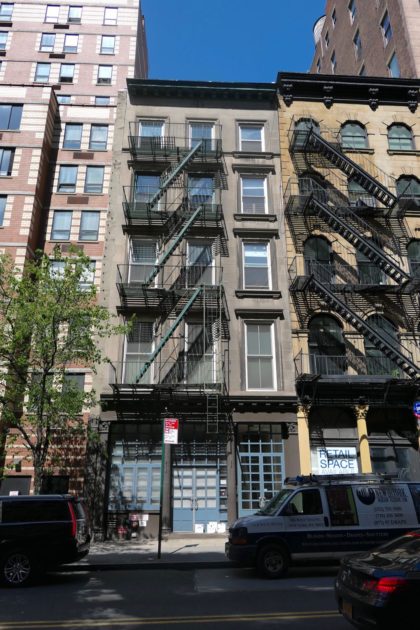 145 CHAMBERS
145 CHAMBERS
In 1895, J. S. Barron & Co. jumped on the rabid new fad that swept America—the bicycle. The Iron Age reported on November 21 that J. S. Barron & Co. would be representing Davidson & Sons of Chicago; including the popular “bicycle built for two.” The journal wrote that the Davidson Bicycle “is made in four models—men’s road wheel in three heights of frame, ladies’ wheel, diamond frame tandem and combination tandem.”
·························
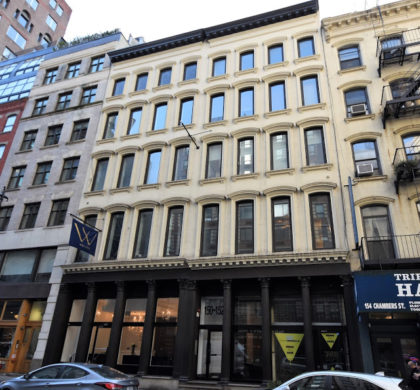 150-152 CHAMBERS
150-152 CHAMBERS
In 1859, Stebbins, Hoyt & Co. moved into the new building at No. 152 Chambers Street. The wholesale dry goods dealers dealt in sheetings and shirtings, yarns, “white and colored warp, batts, wick, twine, wadding, and seamless bags” and a variety of other items, including “musquito netting.” Shortly after moving into the Chambers Street building, managers noticed stock was missing. On Saturday, June 25, 1859, they hid a trusted young employee inside the building. It was not long after closing that he watched as a cart drive up and John Bauden unlocked the door. The driver of the cart and another man helped Bauden load bales of fabric onto the cart, which then rapidly drove off. Bauden was soon arrested and he promised officers he could take them to the buyer of the stolen goods. He was taken in a street car to Brooklyn, but during the trip he planned his escape. The Times reported, “Bauden feigned sickness during the journey, and after leading the officers hither and thither on various pretences [sic], finally leaped from his seat in a horse railway car at the outskirts of the city, and ran rapidly away.” He made it about a mile and a half before being overtaken. In the meantime, the foot pursuit became dramatic, smacking of a Keystone Kops scene. “The chase became an exciting one, and was participated in by the numerous butchers in the vicinity and their bull-dogs.”
·························
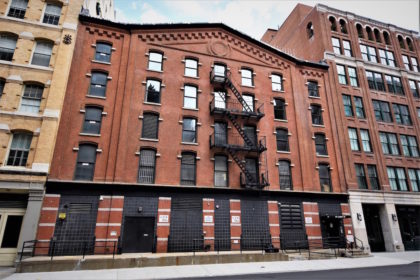 54-58 LAIGHT
54-58 LAIGHT
In 1877, 54-58 Laight Street was taken over by Baker & Williams. Among the largest bonded storage firms in the city, it too operated from several locations. In the summer of 1897, a “fierce fire” broke out in the R. E. Dietz Company’s factory next door. That building, which stretched to the corner of Greenwich Street, was nearly destroyed. Baker & Williams employees had jumped to action immediately when the fire was discovered: “The shutters of all the windows in the warehouse were closed, the doors locked, and every precaution taken against a deluge from the hose,” reported the Times. When the blaze was extinguished, an insurance inspector went through the warehouse, “but found everything intact. Not a drop of water had reached any of the valuable dry goods stored in the building.”
·························
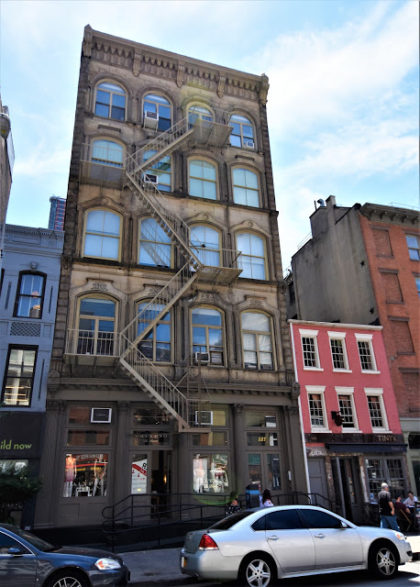 137-139 W. BROADWAY
137-139 W. BROADWAY
The second half of the 20th century saw Tribeca factories replaced with residential lofts, restaurants, and galleries. The dance studio of Batya Zamir was in No. 137-139 West Broadway by the mid-1970s. Zamir had appeared with the Alwin Nikolais and the Murray Louis Companies in the 1960s. Her avant-garde approach was epitomized in her “Rebound” solo presentation here in March, 1976. New York Times critic Anna Kissellgoff called it “a work replete with virtuosity and athleticism and one that suggested that Miss Zamir is on the path to opening up a new genre of movement possibilities.” Richard Van Buren had designed “rubberized tightropes” which were attached to pillars and one wall. Dressed in a leotard and silver pants, Zamir also utilized trapeze-type rubber loops. “Throwing herself against the rubber ropes,” described Kissellgoff, “she was propelled in various directions with a speed that would have been impossible on her own.”
·························
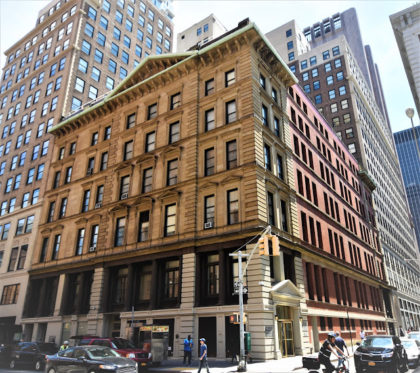 151-157 W. BROADWAY
151-157 W. BROADWAY
Horace Brigham Claflin joined with Williiam H. Mellen to form Claflin, Mellen & Co., a wholesale dry goods business. Ten years later, their business was so successful that the men hired architect Samuel A. Warner to design a massive wholesale store to engulf the entire block front on Worth Street, between West Broadway and Church Street. Faced in Nova Scotia sandstone and rising seven stories, the Italianate style structure was palatial. Renaissance-inspired pediments, quoins and immense balustrades on the West Broadway and Church Street ends resulted in a dignified commercial structure. The building encompassed 48,000 square feet and employed a sales force of 700 which swelled to about 1,000 in the busiest seasons.
·························













These are great!